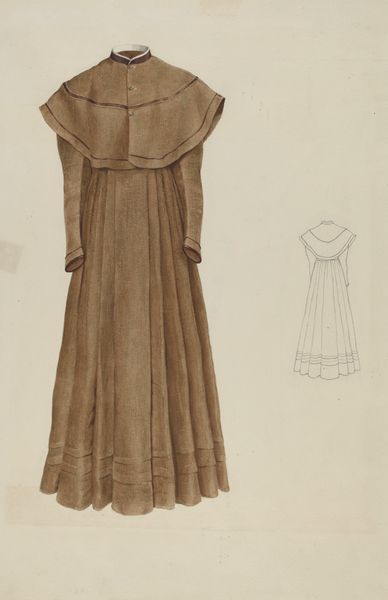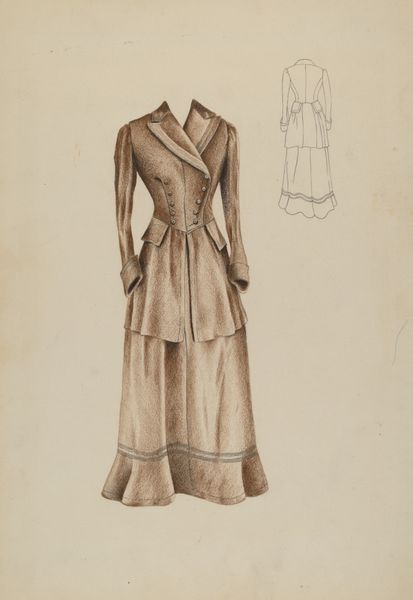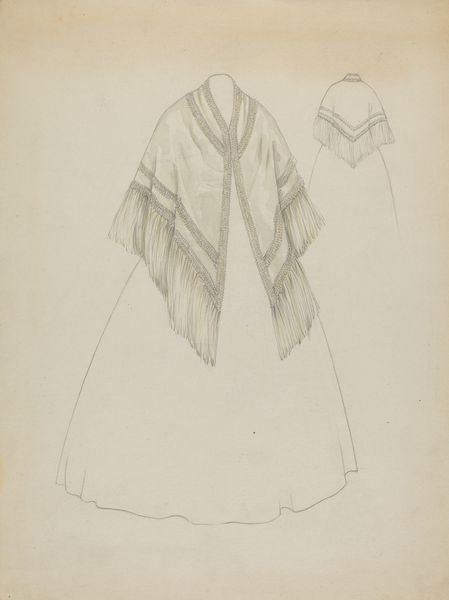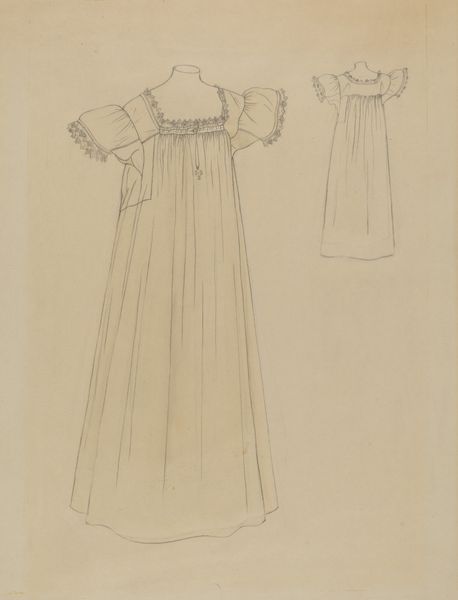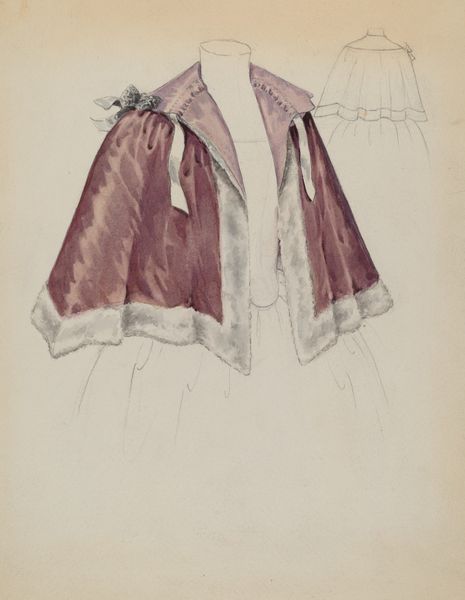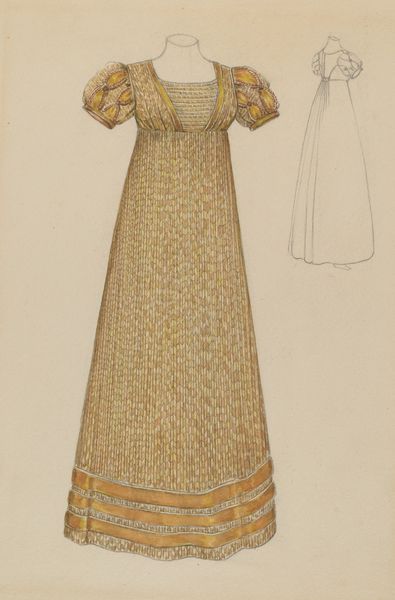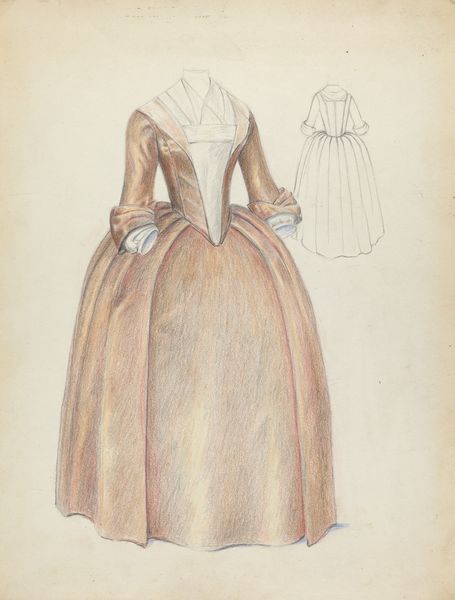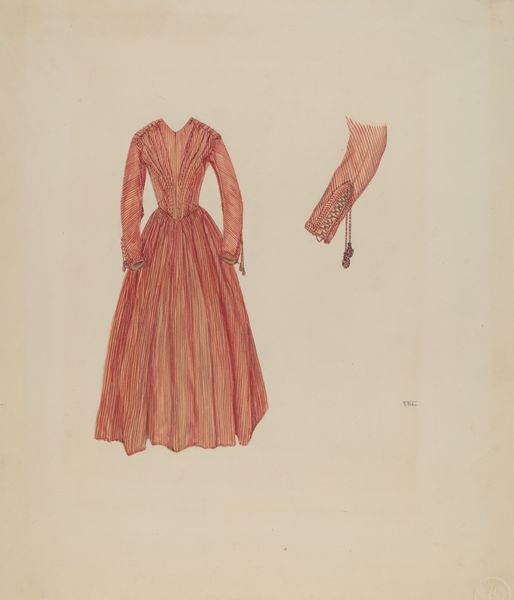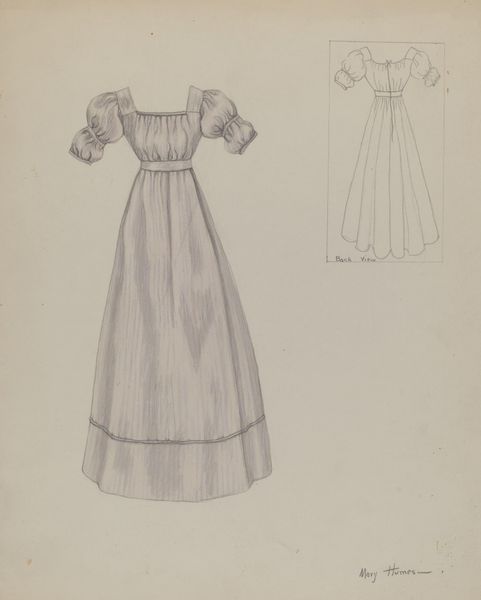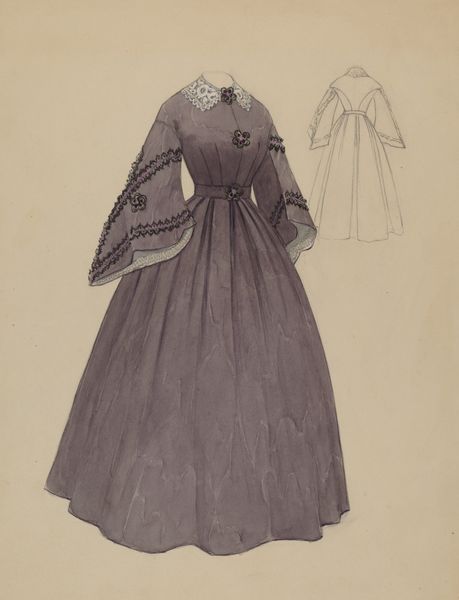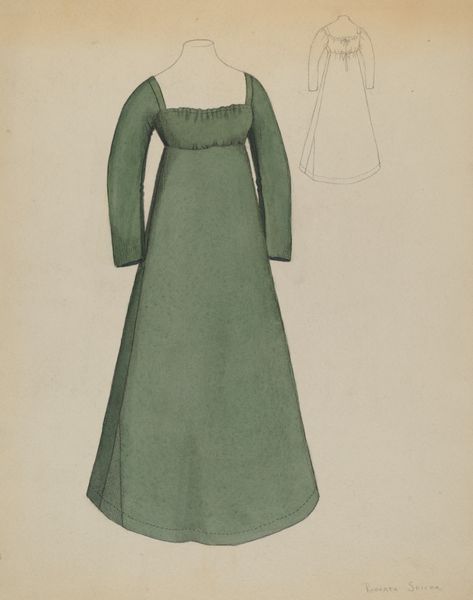
drawing, watercolor
#
portrait
#
fashion design
#
drawing
#
figuration
#
watercolor
#
historical fashion
#
academic-art
Dimensions: overall: 40.4 x 30.6 cm (15 7/8 x 12 1/16 in.)
Copyright: National Gallery of Art: CC0 1.0
Curator: We're looking at a watercolor and drawing titled "Shaker Woman's Costume," made sometime between 1935 and 1942 by an anonymous artist. Editor: Immediately, I’m struck by its almost severe simplicity, but also its muted color palette. It speaks of modesty and function. Curator: Indeed. Shaker design principles were rooted in utility and unadorned purity. The brown dress itself likely signifies the wearer's commitment to the ideals of simplicity, a complete rejection of worldly extravagance. Editor: Notice how the artist meticulously renders the fall of the fabric, particularly the long skirt, with precise watercolor washes. The material seems almost palpable, reflecting an understanding of the craft involved in producing such clothing. The drawing next to it gives a sense of what it looks like on a body and from the back view as well, which gives an overview for the design overall. Curator: Absolutely. This aesthetic of austerity carries significant cultural weight. Shaker design, especially their clothing and furniture, came to represent a conscious alternative to mainstream consumerism, a form of quiet resistance expressed through the deliberate use of plain materials. It showed an important form of social messaging through physical appearance. Editor: It's fascinating how they imbued simple shapes and plain materials with spiritual meaning. It is so subtle; I appreciate how the drawing isn’t overly sentimentalized, allowing us to really focus on its message. Curator: What do you find the significance of clothing designs is here in this drawing? How do clothing items gain an aura of significance through repetitive imagery? Editor: It echoes that commitment and acts as a cultural touchstone for their shared identity and purpose. It reminds me of our culture's need to signal what we belong to as humans. Curator: Thinking about process and materiality, this garment, likely made from homespun wool or linen, stands in stark contrast to today's fast-fashion practices. Editor: Absolutely, a potent reminder that even the most ordinary object, like a simple dress, carries layers of historical and social meaning.
Comments
No comments
Be the first to comment and join the conversation on the ultimate creative platform.
